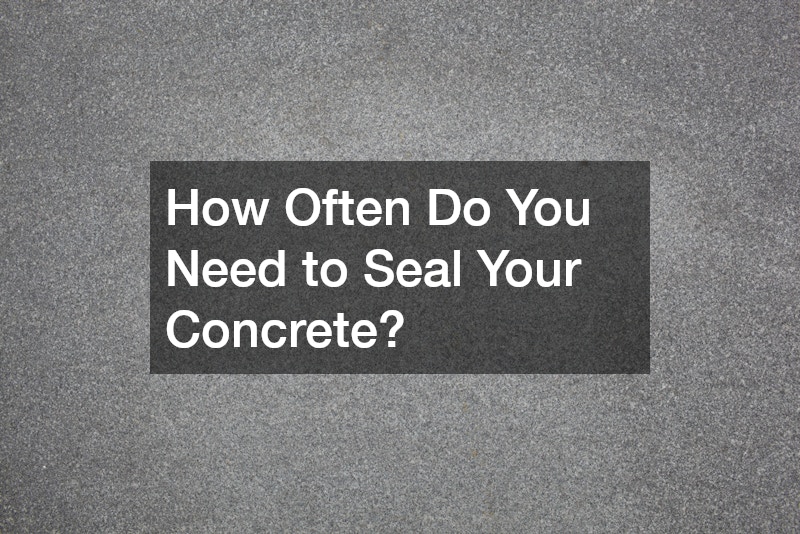
Sealing your concrete is an essential part of maintaining its appearance and durability, especially when it comes to decorative concrete. Whether you’re using concrete for a driveway, patio, or walkway, applying a decorative concrete sealer can protect it from weather, stains, and general wear. But how often should you reseal your concrete to keep it in top condition? Here’s what you need to know about sealing your concrete and how frequently it should be done.
1. Type of Sealer Used
The type of sealer you use on your concrete plays a significant role in determining how often it needs to be reapplied. There are two main types of decorative concrete sealers: penetrating sealers and topical sealers. Penetrating sealers, which are absorbed into the concrete, offer long-lasting protection and typically need to be reapplied every 5-10 years. Topical sealers, on the other hand, sit on the surface of the concrete and generally need to be reapplied more frequently—around every 1-3 years—due to exposure to traffic, weather, and UV rays.
2. Exposure to the Elements
Another factor that influences how often you need to seal your concrete is its exposure to the elements. Concrete surfaces that are regularly exposed to harsh weather conditions—such as heavy rain, snow, or extreme sun—tend to wear down faster than those in more protected areas. If your concrete is exposed to these conditions, you may need to reseal it more often to ensure it remains protected. A high-quality decorative concrete sealer will help guard against moisture, UV damage, and temperature fluctuations, extending the life of your concrete.
3. Traffic and Use
The amount of foot or vehicle traffic your concrete experiences also affects how often you should reseal it. For example, a driveway that sees daily use by vehicles will experience more wear and tear than a backyard patio. High-traffic areas may require more frequent sealing—every 1-2 years—to keep the surface protected from abrasion, stains, and other forms of damage.
4. Signs It’s Time to Reseal
Regardless of the specific timeline, it’s essential to keep an eye on the condition of your concrete. If you notice that water is no longer beading on the surface or if the concrete looks faded or stained, it’s a sign that the sealer has worn off and it’s time to reapply. Regular inspections can help you catch these signs early and prevent damage to your concrete.
5. Benefits of Regular Sealing
Regularly applying a decorative concrete sealer not only enhances the appearance of your concrete but also provides essential protection against cracking, staining, and environmental damage. By maintaining a consistent sealing schedule, you can extend the life of your concrete and save money on costly repairs or replacements down the line.
.




